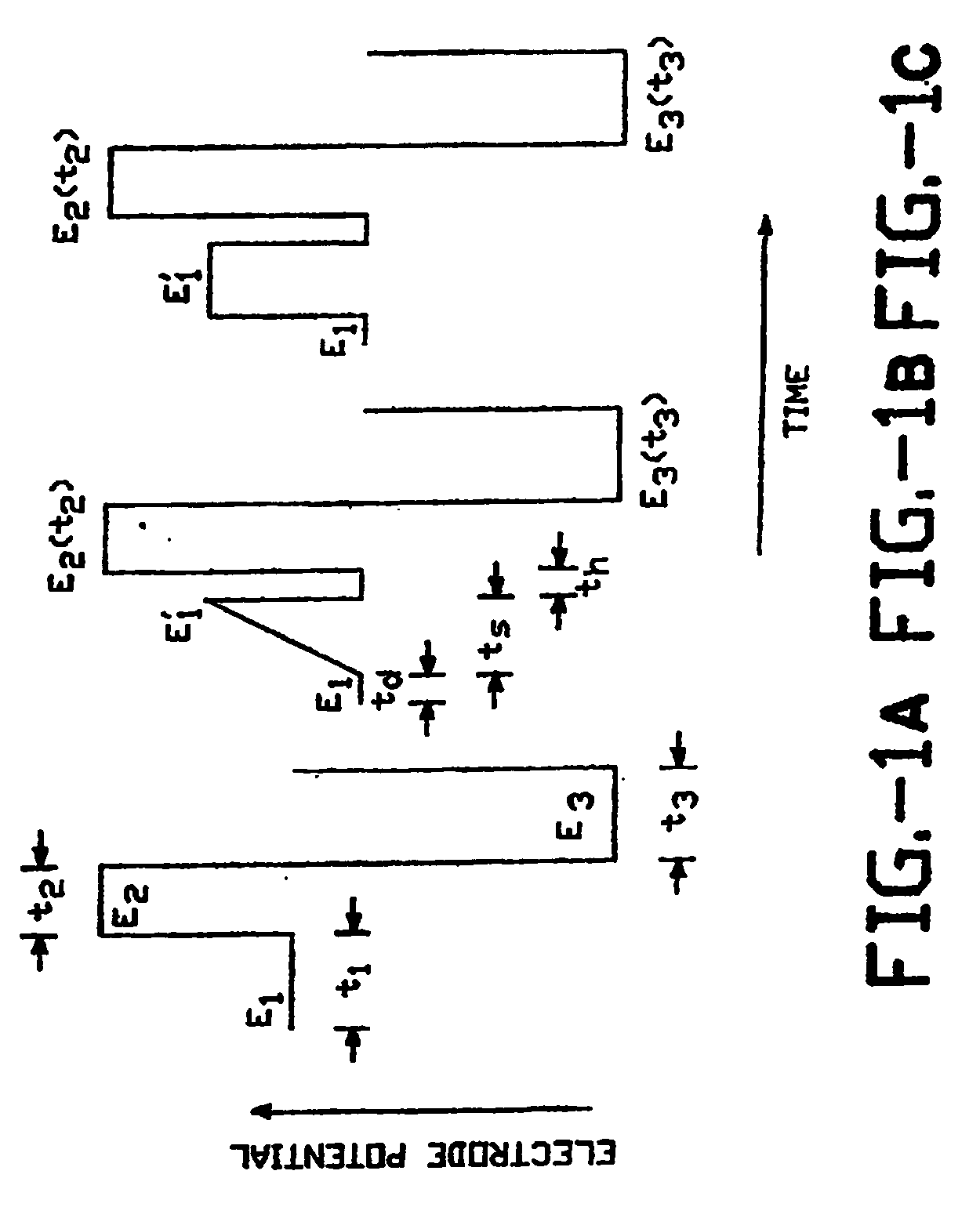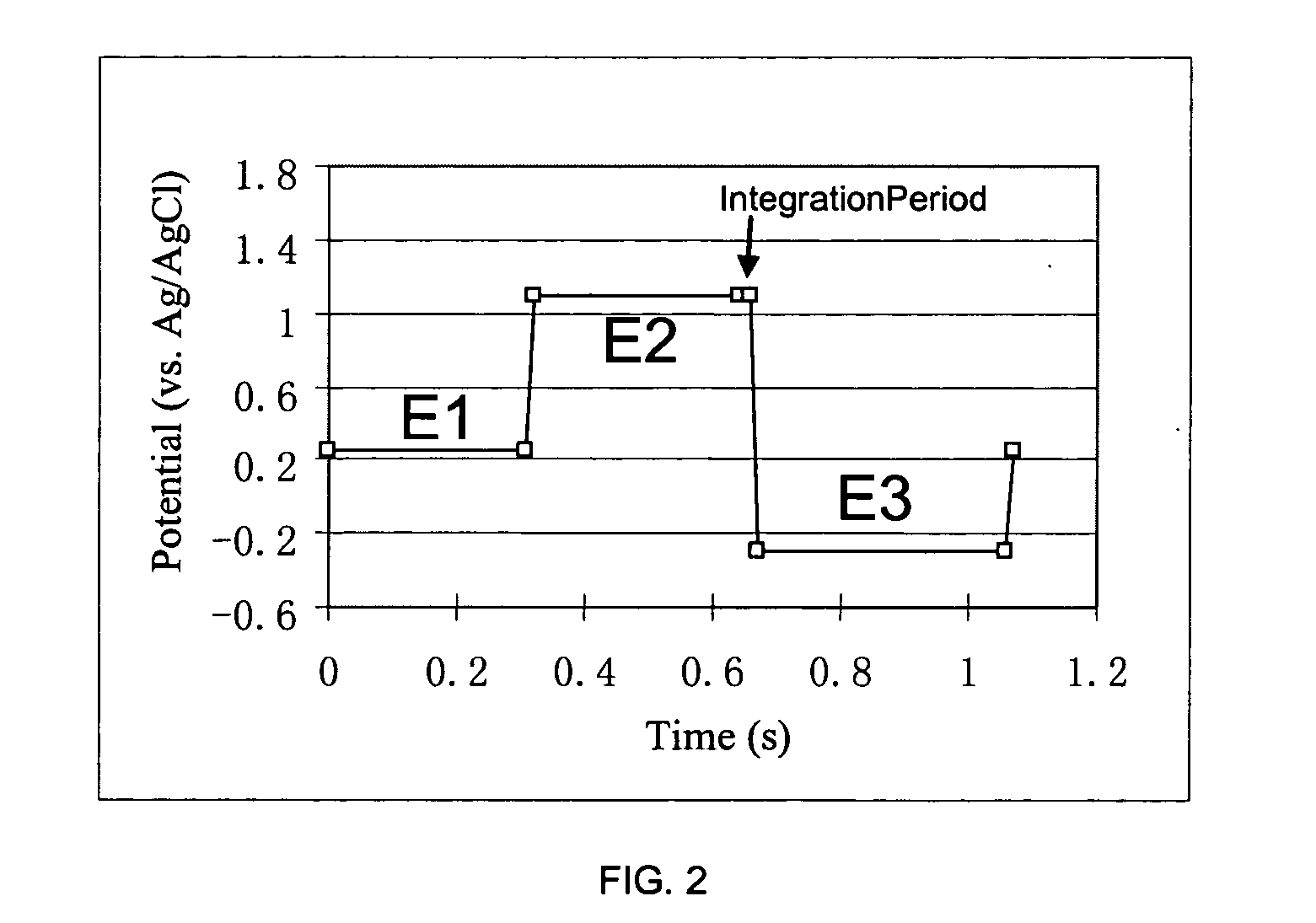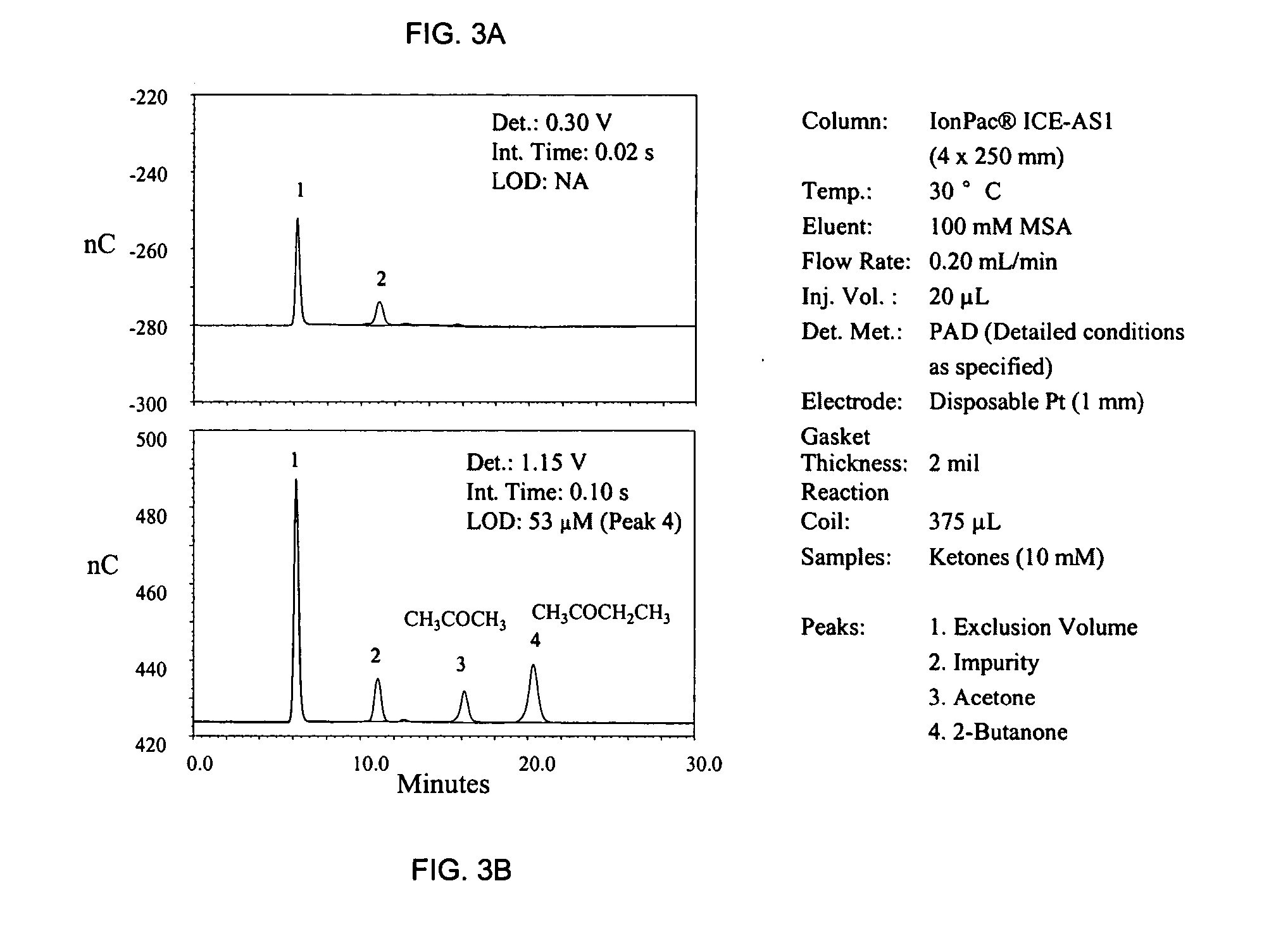Pulsed electrochemical detection method
a technology of electrochemical detection and pulse, which is applied in the direction of material electrochemical variables, liquid/fluent solid measurements, instruments, etc., can solve the problems of inability to achieve the effect of less reproducible than the method using gold electrodes, and reducing the negative curren
- Summary
- Abstract
- Description
- Claims
- Application Information
AI Technical Summary
Benefits of technology
Problems solved by technology
Method used
Image
Examples
example 1
New Method Detects a Compound Class which was Undetectable by the Prior Art Methodology
[0038]FIG. 3A shows a failed attempt to detect acetone and butanone by the prior art method (signal integration at 0.25 V). Only an unknown impurity, most likely an alcohol (peak 2) generates a detection response. Using the same waveform but with a signal integration at E2=1.15 V (FIG. 3B) both ketones are detected easily.
example 2
Elimination of Oxygen Dip
[0039] Using the prior art methodology, many chromatograms exhibit a feature called “oxygen dip” (negative peak 3, lower trace). Referring to FIG. 4, the new method (upper trace) minimizes the oxygen dip by signal integration at a potential which is far removed from the potential range of oxygen reduction to hydrogen peroxide. Even though the peak height of formaldehyde has been reduced by the new method (from 46 to 15 nC), the concurrent lowering of baseline noise (from 0.125 to 0.034 nC) improved the detection limit from 0.82 to 0.66 μM by the new method.
example 3
Minimizing Pulsations by the New Method
[0040] Referring to FIG. 5, the prior art approach and the new method generate a comparable size of response for sulfite anion (45 vs. 41 nC). However, the new methodology minimizes the regular baseline pulsations caused by oxygen insertion into the eluent flow by the pump pistons. The corresponding reduction in baseline noise (from 0.5 to 0.03 nC) leads to a marked improvement in the detection limits with the new method (from 0.34 to 0.02 ppm).
PUM
 Login to View More
Login to View More Abstract
Description
Claims
Application Information
 Login to View More
Login to View More - R&D
- Intellectual Property
- Life Sciences
- Materials
- Tech Scout
- Unparalleled Data Quality
- Higher Quality Content
- 60% Fewer Hallucinations
Browse by: Latest US Patents, China's latest patents, Technical Efficacy Thesaurus, Application Domain, Technology Topic, Popular Technical Reports.
© 2025 PatSnap. All rights reserved.Legal|Privacy policy|Modern Slavery Act Transparency Statement|Sitemap|About US| Contact US: help@patsnap.com



